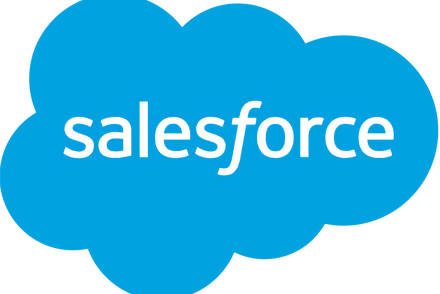In the ever-evolving landscape of technology, insurance companies face a dual challenge: maintaining everyday operations and simultaneously pursuing innovation. My conversations with clients reveal a consistent obstacle to innovation: a lack of time. IT departments are deeply entrenched in the daily grind of business as usual (BAU) and Keeping the Lights On (KTLO), leaving little room for creative thought or novel projects.
According to a report by Forrester, it was projected that by the end of 2022, 75% of all application development would be built with low-code platforms. We’ll need to check in to see if this prediction panned out. But, this dramatic increase supports the notion that businesses are recognizing the value of tapping into the skillset of their tech-savvy workforce and transitioning a substantial portion of IT responsibilities to the business side.
A Millennial Wave to the Rescue
Yet, as we delve into this dilemma, we observe a promising trend: the rise of a younger, more tech-savvy workforce. According to a report by PwC, 50% of the global workforce comprises millennials as of 2020, and a staggering 59% of these millennials stated that an employer’s provision of state-of-the-art technology was important to them when considering a job. These individuals have not only grown up in the digital age but have an innate understanding of technology, which can be leveraged to bring about a significant shift. By empowering these tech-forward employees with the right tools, we can transition a substantial portion of IT responsibilities to the business side. This shift will not only free up IT resources but also foster a culture of innovation and empower employees to have a more significant impact on their organization.
They’re here: Real-World Examples

Box serves as an illustrative example of a no-code platform that fosters collaboration and streamlines key business processes. Essentially, Box is an advanced yet user-friendly cloud content management and file sharing service designed for enterprises. This platform is an innovator in the low/no-code space, empowering users to automate mundane tasks and build custom applications without any prerequisite of extensive programming knowledge. One standout feature of Box is their no-code workflow tooling. This allows users to create efficient workflows that can automate repetitive tasks, thereby saving time and reducing errors. Another notable feature is the digital signing ceremonies, where documents can be signed electronically in a secure environment, eliminating the need for physical document handling and speeding up the signing process. Furthermore, Box facilitates robust approval processes, ensuring that all stakeholders can review, modify, and approve content swiftly and efficiently. These capabilities underscore the considerable potential of low/no-code platforms in enhancing productivity, mitigating risk, and driving innovation within businesses.

In the realm of low/no-code platforms, Salesforce.com shines as an exemplary tool providing robust customer relationship management (CRM) solutions. The platform is a powerful testimony to the potential of leveraging business users’ technological acumen to drive operational efficiencies. Salesforce.com enables users to create custom applications, automate workflows and streamline business processes without the need for extensive coding knowledge. Its intuitive user interface, drag-and-drop builder, and pre-built templates make it easy for non-technical users to design and implement business-specific applications. Furthermore, Salesforce’s automation capabilities, such as Process Builder and Flow Builder, allow users to automate repetitive tasks and complex business processes. Salesforce’s report and dashboard functionalities provide real-time insights into business operations, all manageable without any coding. However, while the platform empowers business users, certain operations still necessitate IT intervention. These include ensuring data security and compliance, managing complex integrations with other systems, and addressing complex coding issues that might arise in more advanced customizations. Thus, Salesforce truly embodies the beneficial duality of low/no-code platforms – empowering business users while preserving integral roles for IT.

Unqork stands as the pinnacle of the no-code revolution, acting as a trailblazer in the domain of full-stack development. This cutting-edge platform enables businesses to build sophisticated applications without the intricacies of traditional coding. With Unqork, the possibilities are endless, whether it’s creating enterprise-grade, client-facing applications, or streamlining internal operations across various departments. The user-friendly, drag-and-drop interface simplifies the application building process, making it accessible to users without a background in coding. Unqork embodies the true essence of agility and innovation, enabling companies to rapidly respond to evolving business needs and market dynamics. Its robust functionalities and powerful integrations afford businesses the flexibility and scalability typically associated with traditional coding, yet without the associated complexities. However, while Unqork democratizes application development, it does not eliminate the need for IT, it rather redefines and elevates their role towards more strategic tasks such as ensuring data security, managing system integrations and overseeing the application lifecycle. Thus, Unqork not only empowers business users but also transforms IT departments from being service-oriented to a strategic partner in business innovation.
Strategy not included
While low/no-code platforms provide exemplary tools for businesses to streamline operations and foster innovation, they don’t inherently prescribe a strategic direction. The success of these platforms is largely contingent on the clarity of the enterprise’s strategic roadmap. It’s critical to understand that while these platforms democratize the application development process and expedite operational efficiencies, they are not a substitute for clear business strategies. A company’s strategic intent should ideally dictate the selection, deployment, and utilization of these platforms.
Businesses also need to ensure a balanced collaboration between the IT department and business users, where the former focuses on complex system integrations, data security, and compliance, while the latter focuses on leveraging these platforms to bolster business operations. Thus, while low/no-code platforms offer remarkable potential, their success is predicated on the strategic acumen of the business.
In considering the deployment of low/no-code platforms, acknowledging the need for governance structures is crucial. These frameworks ensure that solutions developed align with the organization’s strategic direction and adhere to established standards. Without governance structures in place, there’s a risk of process and data sprawl, where multiple solutions are created in silos, leading to redundancy and complexity.For instance, multiple teams might independently create similar applications, leading to unnecessary duplication. This not only results in wasted time and resources, but it also poses potential data consistency issues, where the same data might be used, stored, or interpreted inconsistently across different applications.
Moreover, governance plays a significant role in upholding the organization’s security posture. With the ease of low/no-code platforms, creating applications and manipulating data is no longer confined to the IT department. This democratization of software development necessitates robust security protocols to safeguard against potential breaches and ensure compliance with data privacy regulations. Therefore, establishing clear governance structures becomes a cornerstone to balance the innovation enabled by low/no-code platforms and the need to control process sprawl, ensure data integrity, and maintain security.
Shifting IT’s Focus: New Horizons for Innovation and Opportunities
In the era of low/no-code platforms, the focus of IT departments can be strategically redirected towards complex technology domains and innovative solutions that drive significant value within businesses. These areas of focus span from the inception of innovative technological solutions, leveraging generative AI, to the exploration of blockchain applications, and the deprecation of antiquated legacy systems.
One of the most promising fields of innovation lies within generative AI. With its ability to generate new data from existing ones, IT departments can harness this technology to create new patterns and models that can significantly improve decision-making processes. Innovative solutions utilizing generative AI can enable businesses to simulate scenarios or predict future trends, contributing significantly to strategic planning and risk management.
Simultaneously, blockchain technology presents a fertile ground for IT departments to cultivate. By leveraging blockchain’s decentralization, transparency, and security features, IT professionals can develop applications for secure communication, transparent transactions, and efficient contract enforcement, among others.
Moreover, the focus on deprecating decades-old legacy applications is an opportunity for IT departments to ensure that the business is operating with the most efficient, reliable, and secure technologies. By replacing outdated systems with modern, streamlined applications designed on low/no-code platforms, IT can significantly reduce maintenance costs, improve system performance and reliability, and eliminate various security vulnerabilities.
Lastly, with the ongoing shift towards cloud computing, IT departments should leverage cloud elasticity to scale resources up and down as required by business operations. This move will not only result in cost savings but also enhance business agility, enabling swift response to fluctuating demand. Cloud elasticity also facilitates seamless collaboration among teams, promotes remote working, and ensures business continuity, proving to be a game-changer in today’s digital age.
In conclusion, by embracing no/low-code platforms and the innate tech proficiency of the emerging workforce, insurance IT can pivot from mundane maintenance to spearheading transformative initiatives, ultimately driving the industry forward. This transition isn’t about diminishing the role of IT; it’s about amplifying their impact by focusing on strategic modernization and innovation that can provide a competitive edge in a market that is increasingly dependent on technological agility and foresight.





